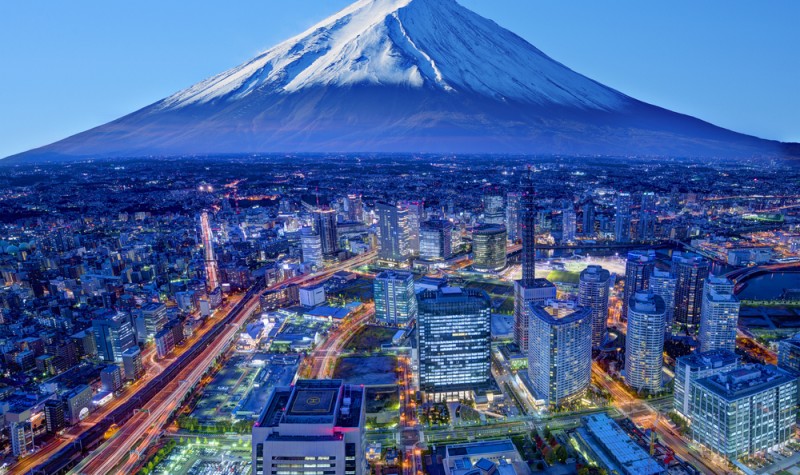What the West can learn from Japan’s wilderness years

The West has learnt nothing from the experience of Japan’s lost two decades. That could prove to be painfully expensive.
“You think the odds look right, that they are in your favour?
This is a billiard table. An easy, flat, green billiard table. And you have hit your white ball and it is travelling easily and quietly towards the red. The pocket is alongside. Fatally, inevitably, you are going to hit the red and the red is going into that pocket. It is the law of the billiard table, the law of the billiard room.
But outside the orbit of these things, a jet pilot has fainted and his plane is diving straight at that billiard room, or a gas main is about to explode, or lightning is about to strike.
And the building collapses on top of you and on top of the billiard table. Then what has happened to that white ball that could not miss the red ball, and to the red ball that could not miss the pocket? The white ball could not miss according to the laws of the billiard table. But the laws of the billiard table are not the only laws in this particular game.”
– Extract from the novel From Russia with Love, by Ian Fleming.
“In the 1970s, the Yale economist Herbert Scarf determined that the time to equilibrium scales exponentially with the number of products and services in the economy to the power of four. The intuition behind this relationship is straightforward: the more products and services, the longer it takes for all the prices and quantities to adjust… if we optimistically assume that everydecision in the economy is made at the speed of the world’s fastest supercomputer (currently IBM’s Blue Gene, at 70.72 trillion floating-point calculations per second), then using Scarf’s result, it would take a mere 4.5 quintillion (4.5 x 1018) years for the economy to reach general equilibrium after each exogenous shock. Given that shocks from factors such as technological change, political uncertainty, weather and changes in consumer tastes buffet the economy every second, and the universe is only about 12 billion (1.2 x 1010) years old, this clearly presents a problem.”
– Eric Beinhocker, The Origin of Wealth.
As Ian Fleming implies, there are laws, and then there are laws. Meanwhile,we make our fragile plans, unaware of just how much we don’t know.
Economics, it turns out, is not a science at all. In science, there are testable and falsifiable hypotheses. As the philosopher of science, Karl Popper, reminds us, one failed experiment is all it takes to refute a theory. Now apply that logic to an economic experiment like quantitative easing (QE). This correspondent would argue that the fundamental purpose of QE was to help governments inflate away an unpayable mountain of global debt. So, after 10 years of QE, where’s the inflation? The Federal Reserve has just cutinterest rates for the first time since 2008 – despite a sub-par US inflation rate, almost full employment and stock markets close to record highs.
| First seen in Master Investor Magazine
Never miss an issue of Master Investor Magazine – sign-up now for free! |
Could QE perhaps be deflationary, instead? Allied with NIRP (negative interest-rate policies), it could well be. Low or negative interest rates allow profitless companies that would otherwise be forced to close, to shamble on like zombies, with access to artificially low, government-sanctioned credit. Their products and services then compete with those from businesses that are economically viable, driving down prices in the process. That sounds deflationary to me.
The world, it would seem, has turned into 1990s Japan, as many financial strategists have long feared it would. Here is a letter to the Financial Times from a Mr. Takashi Ito in Tokyo, from August 2010:
“Sir, ‘Can the Fed prevent Japanese-style deflation, a period of falling prices associated with economic stagnation, from taking hold?’ is a common refrain nowadays.
“The US Federal Reserve’s obsession with Japan is pretty disastrous. First, Alan Greenspan opened the taps wide for too long, fearing Japanese-style deflation, which fuelled the housing bubble that led to the recent financial crisis. Now, fearing the lost decade plus, the Fed is probably going to keep easing until some different but unpleasant outcome is the result. Stagflation perhaps, or hyperinflation?
“This is so ironic, because for so long people have sneered at the Japanese for their inability to steer their economy to recovery. Perhaps because they have sneered so much, it is no longer possible to admit that after a huge housing bubble bursts, there is nothing to do except suffer many years of economic indignity.
“The fixation with Japan was not helpful during Mr Greenspan’s watch, nor I fear will it be of much use this time. The Japanese may be different, but they were not stupid.”
You have to admire that phrase “years of economic indignity”. Only the Japanese could coin something with such exquisite understatement.
It is 30 years since Japan’s Nikkei 225 stock index hit an all-time high of 38,915 (a level it reached on the last trading day of 1989). As Peter Tasker, co-founder of Arcus Investments, points out, within nine months of reaching this peak, the index had halved in value. By the time Shinzo Abe was re-elected as prime minister in late 2012, the index was trading below 9,000 – or less than a quarter of its 1989 level.
It is difficult to appreciate just how much psychological, let alone financial, damage Japan and its investors have endured since the collapse of its late 1980s ‘bubble economy’. One estimate has it that, in terms of the subsequent loss of wealth suffered by property and equity prices, the Japanese economy has been hit by the equivalent of not one but two American Great Depressions. Given that measures like GDP growth and unemployment have held up remarkably well over the period in question, and that Japanese society never once threatened to disintegrate into lawlessness or violence, you have to wonder whether the West might aspire to the level of stoicism that the Japanese have displayed.
But the Japan of 2019 is not the Japan of 1989. Japan is now perhaps the cheapest developed stock market in the world – as you might expect, given what its economy has been through. As Peter Tasker observes, at its 1989 peak, the Japanese stock market traded on a p/e ratio of 70 times, and a dividend yield of 0.5%. Today the p/e ratio of the Japanese stock market is at a 48-year low. Its dividend yield is now 2.5%. Its overall cash return yield (ie dividends plus stock buybacks) is at over 5%. Japanese stocks now yield more than their US cousins.
That a combination of domestic and foreign investors remain traumatised by that two-decade bust is only another reason to be bullish. Other investors’ psychology need not dictate your own.
Financial markets globally, however, are now extremely risky. However, perhaps “risky” is not the most accurate adjective. Consider this presentation by Gerd Gigerenzer, director at the Max Planck Institute for Human Development and Director of the Harding Centre for Risk Literacy in Berlin. Mr Gigerenzer distinguishes between risk and uncertainty, as follows:
RISK: How should we make decisions when all relevant alternatives, consequences, and probabilities are known? *requires statistical thinking.
UNCERTAINTY: How should we make decisions when NOT all alternatives, consequences, and probabilities are known? *requires smart rules of thumb (heuristics) and intuition.
How best to describe financial markets? Modern portfolio theorists would describe them as risky. We would describe them as acutely uncertain.
In this interview between Gerd Gigerenzer and Michael Covel, the following magical phrase pops up:
“The art of knowing what one doesn’t have to know.”
Since we are all drowning in information but starved of knowledge, it helps to be able to filter all the myriad distractions of ‘Finance World’ down into a circle of competence and then never depart from that circle. For ourselves, that circle of competence comprises three types of assets:
- Shares in high-quality businesses run by principled, shareholder-friendly managers who are also adept at capital allocation, particularly when those shares can be acquired at a discount to those companies’ inherent worth (see Japan for more);
- Systematic trend-following funds that are uncorrelated to the major asset classes of stocks and bonds, and that offer the potential for portfolio protection during market shocks;
- Real assets – tangible, non-financial assets that offer the potential for portfolio protection during market shocks and also the potential for protection against inflation and ongoing fiat currency ‘debauchery’.
Surviving whatever the markets throw at us over the coming months and years will require brains. It will also require guts. And, perhaps, a healthy respect for what economics doesn’t teach us, and never will.

Comments (0)